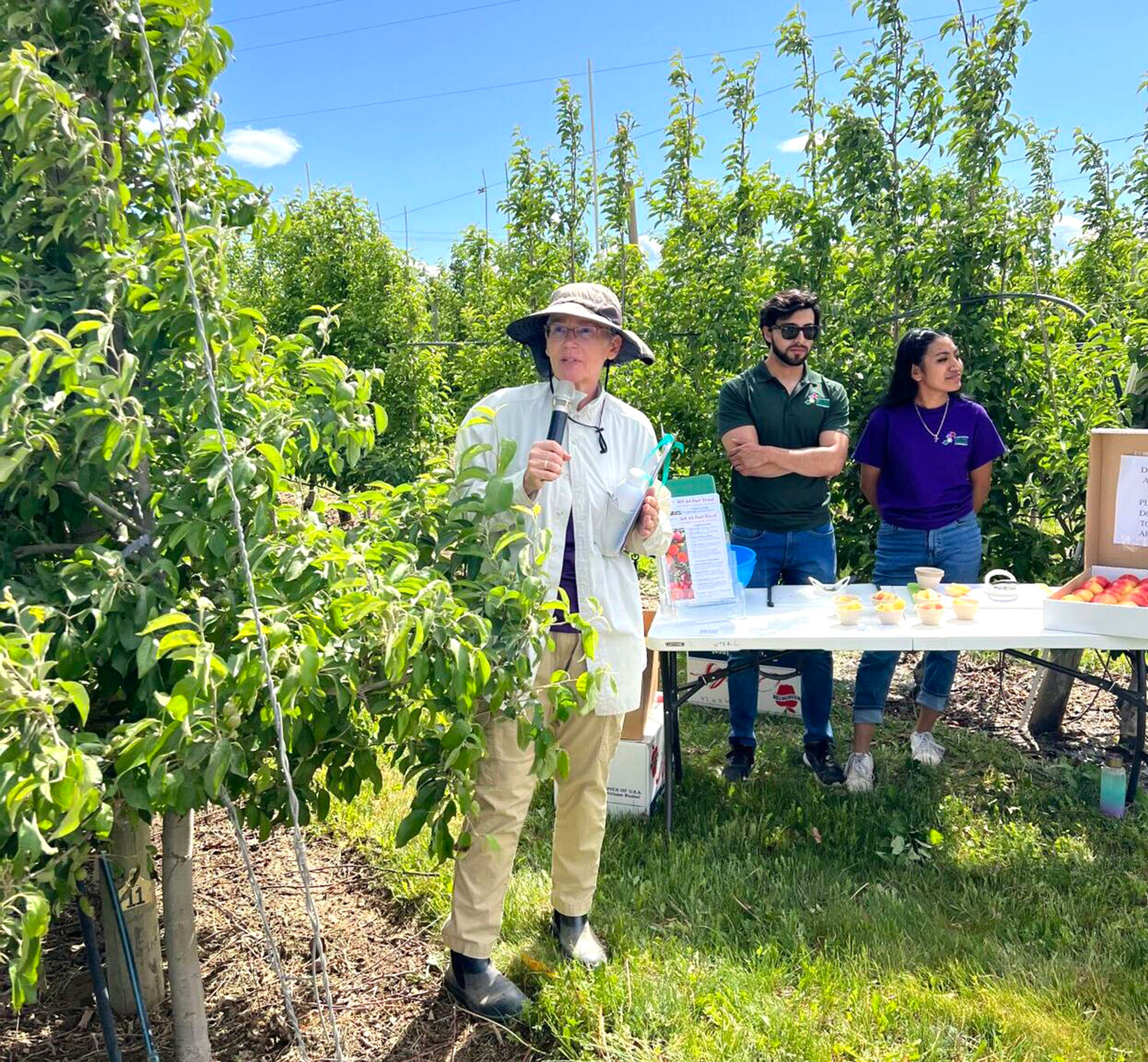Lettuce have local greens
WSU seed bank could be the key to reliable early varieties for chilly northern climes
PULLMAN — Instead of eating lettuce shipped thousands of miles from the Sun Belt, northerners might be munching more greens purchased at their local farmers market or harvested in their own backyards.
Lettuce is a cool-season crop, but typical commercial varieties won’t germinate if spring soil is too cold. Researchers are tapping a unique seed repository at Washington State University to develop varieties that growers could plant early with confidence.
“Lettuce is the number one vegetable consumed in the United States,” said Carol Miles, a vegetable horticulture specialist at the WSU Mount Vernon Northwestern Washington Research and Extension Center. “Most of the past seed screening has been to find strains that resist high temperatures. If breeders can develop varieties that grow better at low temperatures, there will be great new opportunities for local food systems.”
Treasure trove of seeds
To obtain sources of lettuce for testing, Miles took advantage of the 295 different types of lettuce seeds housed at the U.S. Department of Agriculture’s Western Regional Plant Introduction Station on the southeast edge of WSU Pullman. The station is one of four regional seed repositories in the National Plant Germplasm System.
Miles and graduate student Charlene Grahn established a climate-controlled growth chamber where they planted lettuce seeds and identified those that germinated at the coldest temperatures. They have just harvested the first season’s crop and are compiling the results.
When the final numbers are in, commercial breeders will be able to choose the most appealing lettuce lines and incorporate the cold-tolerant trait into varieties for commercial growers and gardeners.
Varieties yield success
In addition to lettuce research, Miles and graduate student Jesse Wimer are using the seed collection to find cucurbits (plants in the gourd family) that can be used as disease-resistant rootstock for watermelon grafts. She is also helping Jinguo Hu, research leader at WRPIS, find fava bean strains that are cold tolerant.
Hu knows the potential of the collection for lettuce breeding because he has seen success with other plants.
“Early chickpea cultivation was limited in the United States due to problems with Ascochyta blight,” he said. But once a specimen was found to be resistant to the causal fungus Ascochyta rabiei, breeders incorporated the resistant gene into the crop and chickpeas became widely grown again in the West.
Peas are also among the success stories, having similarly gained resistance to powdery mildew through selective breeding from the repository.
93,000 deposits
“Almost all major crops in the United States — wheat, rice and soy, for instance — were brought here from somewhere else,” said Hu. Imported crops tend to lack genetic diversity, which leaves them vulnerable to challenges such as harmful insects and diseases. “The National Plant Germplasm System was started in 1946 as a way to preserve plant diversity and breeding opportunities for future generations.”
The Pullman center has 93,000 accessions, or deposits of seeds collected from specific places at specific times. Like all of the regional centers, the WRPIS specializes in specific types of plants. In addition to 2,000 accessions of lettuce, Pullman has more than 17,000 accessions of beans, 21,000 accessions of turf and forage grass, 9,000 accessions of forage legumes and 6,100 accessions of peas.
———
For more information about WRPIS, see http://1.usa.gov/1deYiyB. To learn more about vegetable research at WSU Mount Vernon, see http://bit.ly/wsumtv. To purchase “Gardening in the Inland Northwest,” by Tonie Fitzgerald of WSU Extension’s Master Gardener program, go to http://bit.ly/15fG116.














